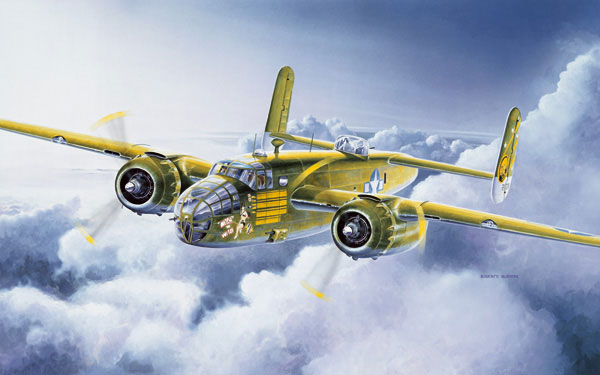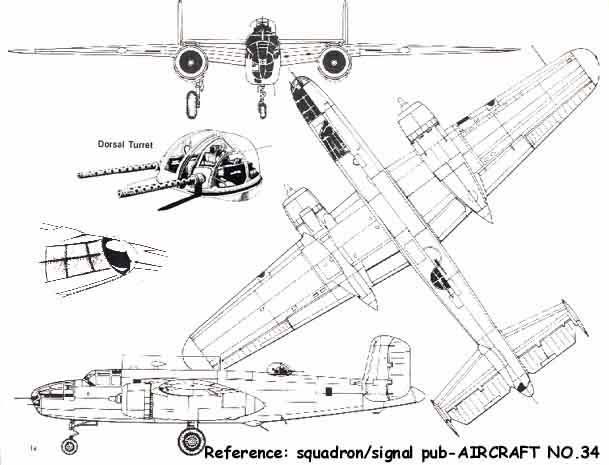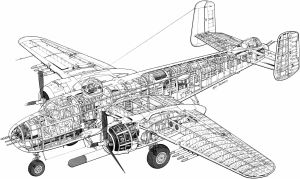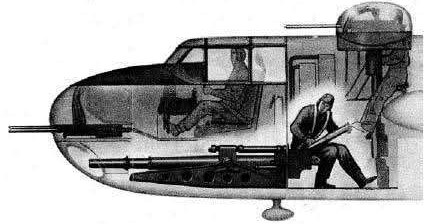 | 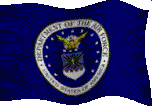 | ||||
| The North American B-25 Mitchell is an American medium bomber that was introduced in 1941 and named in honor of bomber pioneer Brigadier General William "Billy" MITCHELL. They were used in every theater of World War II by most of the Allied nations, and operating across four decades after that in over 2 dozen major variants and at the time of the With the success of K-DAS's F-4U Corsair Fighter the company turned their attention to a possible bomber program; The B-25 had the advantage of range and having operated off of an aircraft carrier in the Doolittle Raid, meeting Major Frehn "Red" SINTAIRE'S requirements for flexibility- As Red put it "There's no more flexibility than an aircraft carrier." Better still, airframes could easily be found for comparison and full blueprints for the airframe were found in a Galnet search, though engines and some other systems couldn't be (fortunately these weren't necessary, since K-DAS were going to use more modern technology in any case). K-DAS engineers conceived the neo B-25 as a tactical support bomber- A craft that the pilots could get close enough to literally see the enemy ("That guy had BLUE EYES!") and drop lots of BOMBS- Specifically, hand grenades for anti-infantry and medium rockets for anti-vehicle, but very little anti-ROBOT armaments. This was no "mistake." The Mitchell II was not intended to take on robots, but rather a robots' anti-infantry screener force of ground vehicles and infantry, which would allow a UGC or UGC-allied Mecha/Robot to get in close enough to destroy the incurring robot. The original design was stretched out 9' 1" to 62' to accommodate more systems and, more specifically, more bombs. K-DAS engineers wanted to stretch it out another 3,' but that was aborted when it was determined the craft would then not fit into the packing containers needed for transport. Under K-DAS development, the B-25 was fitted with catapult nose gear and arrestor hook; However, after field testing the nose gear was removed as unnecessary (thus reducing weight and cost). Unfortunately, the wings could not be engineered for folding to reduce wingspan (they can be removed to shipping, however). Based on input from pilots, K-DAS engineers redesigned the aircraft to be amphibious, but only at a drift; The planes get a droning 0.5 knots on the water under their own power. They can be towed at up to 5 knots, but this is still only suitable for docking. This was not a mistake on K-DAS engineer's part but rather the specific request of pilots, as a planned water landing or takeoff would be easiest under grav pods- The planes really only need to taxi to and from a dock or derrick. 90% of the current B-25 fleet are semi-automated, and only 1% are still manned. The simple economics of war strongly showed that putting people in a relatively flimsy (by current standards) craft such as this wasn't going to work out, whereas having a plane with a computer in control and a pilot thousands of miles away making final command decisions is highly economical. Most of those pilots are only making supervisory oversight decisions in any case; The ground pounders mark most targets for the bombers, ensuring friendly forces are avoided even further than IFF transponders could. The very rare manned planes aren't even bombers- They're typically Command And Control planes for formation flights, and rarely go out in groups of less than 5 automated planes except on training missions. Name: B -25 Mitchell III Bomber. Model Type: Warbird Class: Patrol Fighter/Bomber Crew: Two; No other variant available. Passengers: One on shorter flights. MDC By Location: | |||||
| Fuselage- Cockpit- Wings (2)- | 200 90 100 | Taileron (1; Reaches between tails)- Rudder- Props (4)- | 75 75 80 each | ||
| Speed and Statistical Data: | |||||
| Flying: 600 mph. Range In The Air: 100,000 miles; This is SEVERAL times around the world on most planets. Can be refueled in the air. Service Ceiling: Transatmospheric. Climb Rate: 3,000 ft./min. Wingspan: Assembled: 51 ft 3 in. Boxed: 17 ft 1 in. Length: 38 ft 1 in Weight: 24,800 lbs max/12.4 tons. Height: 13 ft 8 in | Cargo: Pilots supplies only. Power Systems: Twin MM-4/20/100 Neckabeneezer Hydrogen Fuel Cell Turboprop Engine; Output: 2,000 hp at 1,200 KHw each. Both engines do NOT have to be on-line for the craft to FLY, but they will to take off or land. Flight Systems: Primary: Anti-Grav Pods Secondary: Aero-Foil effect in emergency. Cost and Availability: 200,000credit to authorized purchasers; Always available to authorized purchasers. Black Market Cost and Availability: 5 to 50 MILLIONcredit- Fluctuates WILDLY; Not very common. | ||||
| Weapons Systems: | |||||
| 1. Eight L-02 Rail launchers: This rail launcher was installed to give the pilot a dog-fighting ability. The LIMA-02 (said "LEE-MA zero too") is fed from a 1,200-round magazine in the plane. This system is effective both in a low-altitude air defense role, and in a ground-attack role. Designed for Micro-Missiles. Purpose: Heavy Assault. Damage and Range: Varies by type used. Rate Of Fire: Per gunner's attacks per melee. Payload: 1,200 micro-missiles. Bonus: Either quadruples the normal range of the missile OR triples it and adds +3 to strike. 2. M-550d Heavy Particle Beam Cannon (aka "Pa Duce"): This was Terra's first "front line" energy weapon; An old M-2 was refitted with an "excited focused particle beam emitter" (a crude PBC) for mining and demolition work; After testing, it was tested for LE to disable vehicles; Success there led to testing for anti-missile operation; Success there (in conjunction with radar and computer control systems) led to testing as anti-armor ssytems. It excelleled in all the above, but was not adequate for anti-aircraft and couldn't actually 'destroy' any of the above so much as disable them, though 'disabling' a missile caused them to crash or self-destruct more often than not.It's no longer in general UGC service, but is in use with many RDF's, CDF's, militias, and Mining companies.  Purpose: Assault MD: 4D10 per blast Rate of Fire: Per pilots attacks per melee. Range: 4,300 feet (1,300M). Payload: Unlimited 3. Bomb Bay: Up to 2 tons of bombs (25% more than the original) can be carried; Typically thousands of hand grenades dropped in clusters of 100, covering an area of about a half mile at around 1D4 times five to everything in the area. | 4. Wing Mounted Weapons Systems: The plane can carry up to 11 pods (3 each wing, 1 undercarriage, plus 2 OVERWING). A) M-7 Rocket Launcher: 24 2-inch rocket tubes in 12 rows of 4 each. Each rocket tube has 4 rockets. Purpose: Heavy Assault M.D.: Each rocket does 2D6 M.D. Rate of Fire: Volleys of 6 or 12 times pilots attacks per melee. Range: 12,000' Payload: 96 per pod. Up to 6 pods can be carried. B) M-11 Torpedo Pod: An ASW torpedo pod. Carries the Mk-82 Airborne Torpedo essentially a modified version of the Mk-81 Submarine Launched Torpedo. The initial launch is by a nothing so complicated as releasing it from the latches that hold it to the pylon. The on board hydro-cell motor then takes over as soon as the torpedo splashes. Each pod hold 3 Mk-82's. Purpose: Offensive/Anti-Ship M.D.: 4D6 times 10 per torpedo Blast Radius: 40' Maximum Range: 80 miles Minimum Range: 5 miles Rate of Fire: 1 torpedo per pilots attacks per melee. Payload: Each pod holds 3 Mk-82's. C) M-12 Fuel Pod: Essentially a modified version of the M-11 Torpedo Pod. In this case, however, it is used as a fuel pod to double the normal range of the craft. D) C-441 Canister Pod: Basically a hollowed out version of the M-7 pod, used to drop highly sensitive and extensive messages. A nose-mounted device using GPS or laser detection guides the pod to within 1/8th of an inch of the intended target. 5. Flying Bomb Variant: A stripped down version filled with explosives can be used, typically as an anti-ship missile during a raid on a given world. Exact controlling systems vary, but the most common is to program the onboard control system to aim for a ship of the appropriate profile, then detonate the explosives within an acceptable range. | ||||
| Features: | |||||
|
| ||||
| 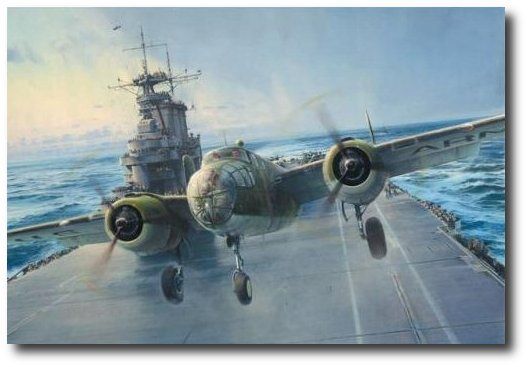 | ||||
